By
Nagesh Tatoba Suryawanshi
Asst.Professor in Civil Engg. dept
S. B. Patil, College of Engineering, Indapur,(Pune).
Abstract
This Paper reports an experimental study carried out to investigate the use of water-soluble polyvinyl alcohol as self-curing agent. In this study Compressive and tensile strength of self-curing concrete for 7 and 28 days is found out and compared with conventional concrete of similar mix design. The durability of self curing concrete is found out by exposing concrete cubes to chloride environment and effect of the same on strength of cubes is determined by finding out compressive strength of cubes. The results indicated that Water retention for the concrete mixes incorporating self-curing agent is higher compared to conventional concrete mixes, as found by the weight loss with time. The result also showed that compressive, tensile and flexural strength of self curing concrete is found to be higher than conventional concrete.
Key words: Self curing agent, polyvinyl acetate, polyvinyl alcohol, water Retentivity. etc.
1.0 INTRODUCTION¬:
Curing of concrete is for maintaining satisfactory moisture content in concrete during its early stages in order to develop the desired properties. However, good curing is not always practical and often neglected in many cases. Several investigators asked the question whether there will be self-curing concrete. Therefore, the need to develop self-curing agents attracted several researchers. The concept of self-curing agents is to reduce the water evaporation from concrete and hence increase the water retention capacity of the concrete compared to conventional concrete. It was found that water soluble alcohols can be used as self curing agents in concrete. The use of self-curing admixtures is very important from the point of view that water resources are getting valuable every day (i.e. each 1m3 of concrete requires about 3m3 of water for construction most of which is for curing). The benefit of self-curing admixtures is more significant in desert areas (e.g. Rajasthan) where water is not adequately available.
2.0 PROPERTIES OF MATERIALS:
2.1 Polyvinyl alcohol as self curing agent:
Polyvinyl alcohol is produced commercially from polyvinyl acetate, usually by a continuous process. The acetate groups are hydrolyzed by ester interchange with methanol in the presence of anhydrous sodium methylate or aqueous sodium hydroxide. Polyvinyl alcohol is an odorless and tasteless, translucent, white or cream colored granular powder. Polyvinyl alcohol contains two OH groups. It helps to retain water from concrete. It is soluble in water, slightly soluble in ethanol, but insoluble in other organic solvents. Typically a 5% solution of polyvinyl alcohol exhibits a pH in the range of 5.0 to 6.5. Polyvinyl alcohol has a melting point of 180 to 190°C.
2.2 Specific gravity of Fine aggregate:
An Indian standard specification IS: 2386(part III) of 1963 gives various procedures to find specific gravity of aggregate. In this study specific gravity is found by using pychnometer method,
Specific gravity of natural sand is found to be 2.60.
Specific gravity of Coarse aggregate is found to be 2.63.
2.3 Fineness modulus:
Fineness modulus of natural sand is found to be 2.7
Fineness modulus of Coarse aggregate is found to be 2.8
3.0 Experimental study conducted:
Concrete mix design was carried out by using Indian Standard Method (IS: 10262-1982) and the mix design proportion is found to be 1:1.25:2.75.
Mix design and above proportion were found out for M25 grade concrete.
3.1 DETERMINATION OF PHYSICAL PROPERTIES OF CONCRETE:
By using varying percentages of Polyvinyl alcohol Concrete cubes were casted and and average weight loss was found after 7 and 28 days are shown in table- 1and a graph-1 as under:
Table1: average weight loss in gm.
|
SR. NO. |
% Poly vinyl alcohol by the weight of cement |
AVERAGE WEIGHT LOSS(gm) | |
|
7 DAYS |
28DAYS |
||
|
1 |
0.03 |
105.25 |
192.67 |
|
2 |
0.06 |
77.5 |
205.67 |
|
3 |
0.12 |
61 |
160 |
|
4 |
0.24 |
56 |
140.67 |
|
5 |
0.48 |
73 |
126.33 |
3.2 DETERMINATION OF MECHANICAL PROPERTIES OF CONCRETE:
3.2.1Compressive strength, flexural strength and indirect tensile strength of conventional and self cured concrete are found and results are shown in table:2 and graphical representation of results are shown in Fig.2,3 & 4.
Table 2: Comparative statement
| SR. NO | % Poly vinyl alcohol by the weight of cement | Average Compressive Strength after 28days(N/mm2) | Average indir. Tensile Strength after 28days(N/mm) | Average Flexural Strength after 28days(N/mm2) |
|
1 |
0.00 (Conventional mix) |
32.1 |
4.30 |
5.856 |
|
2 |
0.03 |
25.4 |
4.005 |
5.6 |
|
3 |
0.06 |
32.4 |
4.215 |
6.54 |
|
4 |
0.12 |
30.9 |
4.945 |
7.4 |
|
6 |
0.24 |
32.2 |
4.920 |
7.0 |
|
7 |
0.48 |
33.7 |
4.691 |
8.0 |
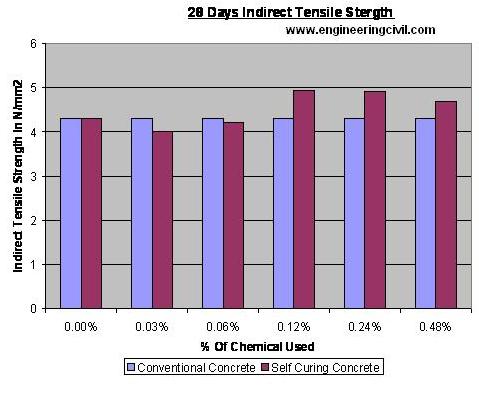
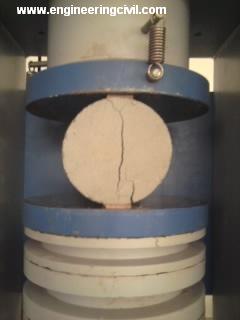
3.2.2 Durability test on concrete cubes:
The Conventional concrete cubes as well as self cured cubes (curing period of 28 days) were immersed in salty water. The % of salt used was 10% by weight of water. cubes were cured in salty water for14 days. After 14 days they were tested under compression testing machine. The results found are shown in table:3
Table-3 compressive strength after 14 days immersion in salty water
|
SR. NO |
TYPES OF CUBES |
COMPRESSIVE STRENGTH N/mm2 |
|
1 |
Conventional concrete cubes |
28.9 |
|
|
Self curing concrete cubes |
|
|
2 |
0.03 |
23.3 |
|
3 |
0.06 |
30.1 |
|
4 |
o.12 |
26.7 |
|
5 |
o.24 |
29.8 |
|
6 |
0.48 |
30.1 |
4.0 CONCLUDING REMARKS:
The following could be concluded from the results obtained in this study :
i) Water retention for the concrete mixes incorporating self curing agent is higher compared to conventional concrete mixes, as found by the weight loss with time.
ii) Self-curing concrete resulted in better hydration with time under drying condition compared to conventional concrete.
iii) Performance of the self-curing agent will be affected by the mix proportions mainly the cement content and the w/c ratio.
iv) Use of Polyvinyl alcohol (0.48% by the weight of cement) as self curing agent Provides higher compressive, tensile as well as flexural strength than the Strengths of conventional mix.
v) Increase in the Percentage of polyvinyl alcohol results in the reduction of weight loss.
vi)Durability of self-curing concrete to sulphate salts and chloride induced corrosion is needed to be evaluated.
vii) In the study cubes were casted and kept for curing in room temperature about 250-300c.practical feasibility of self cured member is need to be checked in hot regions
5.0 REFERENCES:
1. “SELF-CURING CONCRETE: WATER RETENTION, HYDRATION AND MOISTURE TRANSPORT” A.S. El-Dieb Department of Structural Engineering, Faculty of Engineering, Ain Shams University, 1 El-Sarayat St., Abbasia 11517, Cairo, Egypt
2. “SELF-CURING CONCRETE”, By Tarun R. Naik and Fethullah Canpolat Report No. CBU-2006-11 REP-610 April 2006 A CBU Report Department of Civil Engineering and Mechanics College of Engineering and Applied Science
3. “THE UNIVERSITY OF WISCONSIN-MILWAUKEE MIXTURE PROPERTIES FOR INTERNAL CURING” By: Dale P. Bentz, Pietro Lura, John W. Roberts INTERNATIONAL CONCRETE/FEB2005
4. “INVESTIGATIONS AND STUDY ON THE EFFECT OF AR GLASS POLYMER FIBRES IN SELF-COMPACTING SELF-CURING CONCRETE.” S. U. Kannan, Selvamony C., M. S. Ravikumar and S. Basil Gnanappa Sathyabama University, Chennai, India C.S.I Engineering College, Nagercoil, India
5. “INVESTIGATIONS ON SELF-COMPACTED SELF-CURING CONCRETE USING LIMESTONE POWDER AND CLINKERS.” C. Selvamony, M. S. Ravikumar, S. U. Kannan and S. Basil Gnanappa. Sun College of Engineering and Technology, Sathyabama University, Chennai India.
6.”BEHAVIOUR OF SELF COMPACTED SELF CURING KILN ASH CONCRETE WITH VARIOUS ADMIXTURES” M. S. Ravikumar, Selvamony C., S. U. Kannan and S. Basil Gnanappa Sathyabama University, Chennai, India Moderator Gnanadhasan Polytechnic, Nagercoil, India
7. Dhir, R. K., Hewlett, P. C., Lota, J. S., and Dyer, T. D., ?An Investigation into the feasibility of formulating ‘self-cure’ concrete,? Materials and Structures/Materiaux et Constructions, Vol. 27, No. 174, 1994, pp. 606-615.
We at engineeringcivil.com are thankful to Sir Nagesh Tatoba Suryawanshi for submitting his research paper on “Assessment of the properties of Self-Cured Concrete” to us. This will be of great help to all civil engineers seeking information on Self-Cured Concrete.
If you have a query, you can ask a question here.



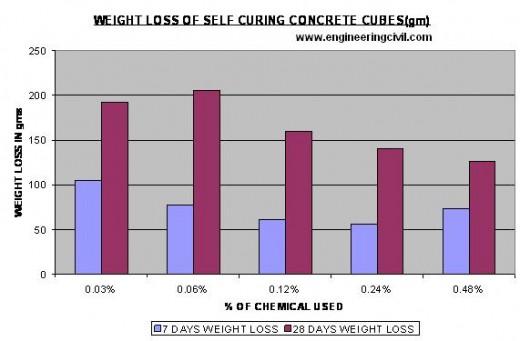
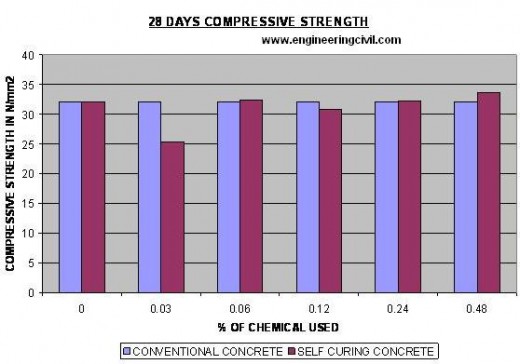
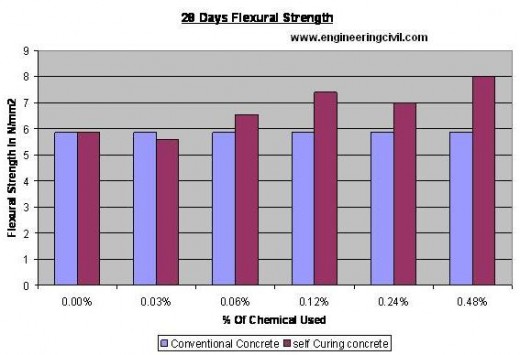
its execelent research which guide us in the direction of our project …..thank you sir
this is a great research done by u BUT we need to know the researches done on this topic and which are the new self curing agents on which we can work on as we are doing a project on the same topic…kindly waiting for your reply…
hello sir ,
it is registered in patent or not??
please reply me
research work is going on